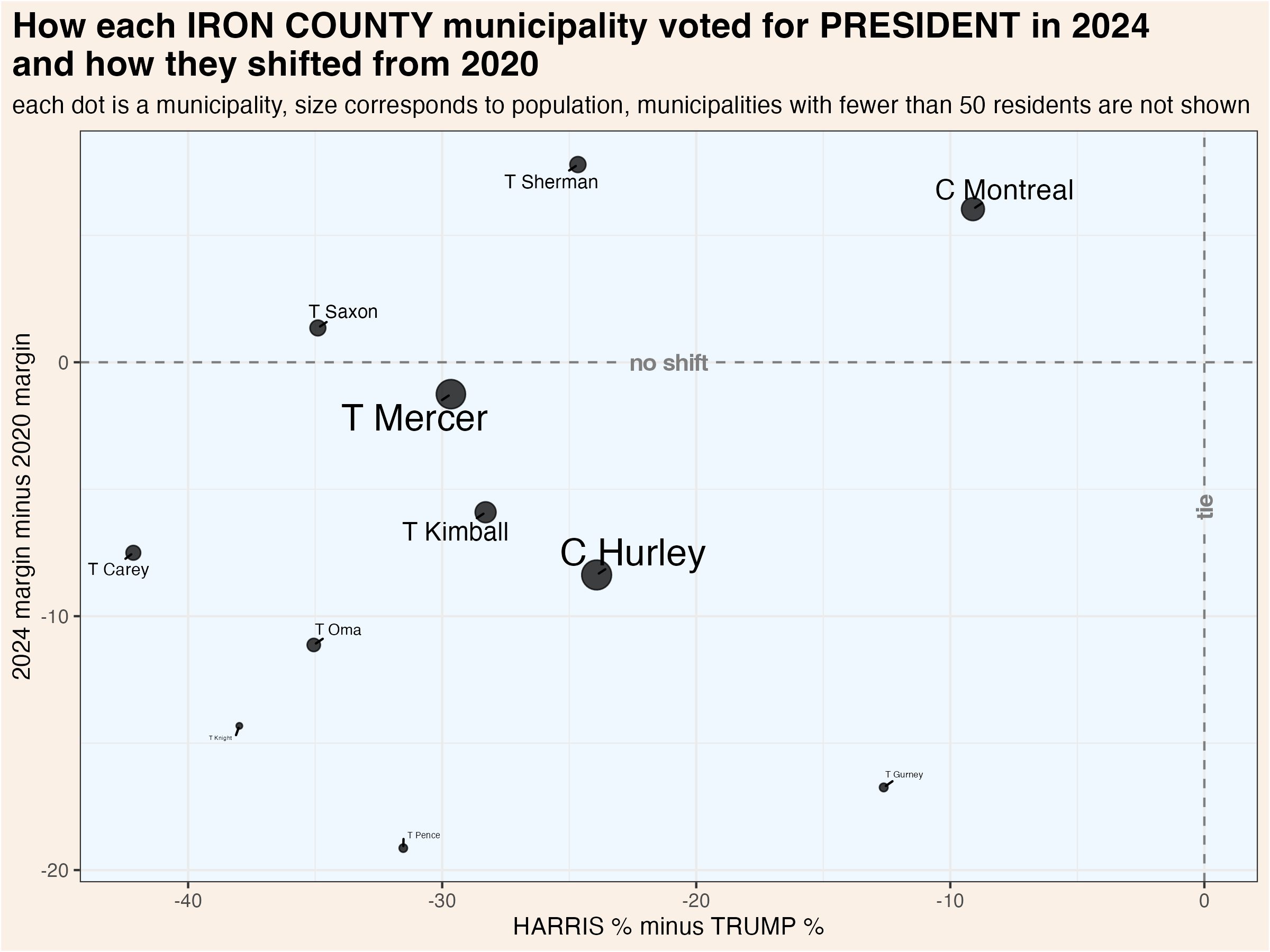
28 Iron
Iron County (pop. 6,200) is located on the border with the Upper Peninsula of Michigan. It is Wisconsin’s oldest county, with a median age of 56. It is also the least densely populated, the third least population, and has a low median household incomes. This last fact likely reflects the fixed incomes of its many retired residents, given that the poverty rate is about equal to the state average. During the 2000s, Iron County was closely competitive during presidential elections and voted for Democrats in races for governor and US Senate. In the 2010s, the county has shifted hard towards the Republican Party.
28.1 Demographics

28.2 County Election Results

Click each column name to sort its values.
28.3 Municipality Election Results
The City of Hurley and Town of Mercer both have around 1,400 residents, making them nearly twice as large as any other municipality in Iron County. Most municipalities are strongly Republican, but handful of them have occasionally voted for a Democratic candidate in recent election cycles, including the Town of Anderson in the 2022 gubernatorial election and the Town of Gurney in the 2020 presidential election.
This map shows the location of each municipality in the county, as it existed in 2022.

These dot plots show the most recent election results in each municipality.



To more clearly illustrate recent changes in municipality voting trends, these scatterplots compare the most recent vote for president and senator with the shift from that office’s previous election.


These maps show show every election result since 2000 in each municipality.



Click each column name to sort its values.
28.4 Supreme Court Election Results
Wisconsin’s Supreme Court has 7 justices, each of whom are elected to 10 year terms in statewide elections held in April. State law prohibits more than one Supreme Court election from being held in a single year. If a seat becomes vacant, the governor appoints a replacement who serves until the next year in which no court election is already scheduled. If more than two candidates achieve ballot access, a nonpartisan, top-two primary is held in February.
Court elections are formally nonpartisan, but candidates are usually supported by either liberals or conservatives. In recent years, it has become common for the Democratic and Republican parties to endorse and actively campaign on behalf of favored judicial candidates. The liberal and conservative labels indicated in the following graphs and tables are based on widely recognized tendencies, not any formal affiliation.
28.4.1 County Election Results
This graphic compares how presidential, gubernatorial, and court elections have trended over the past quarter century. Click the “Table” tab to see detailed results for the Supreme Court races.

28.4.2 Municipality Election Results
The following table shows the results of each Supreme Court election by municipality. The graphic visualizes the shifts over the past three court elections.
